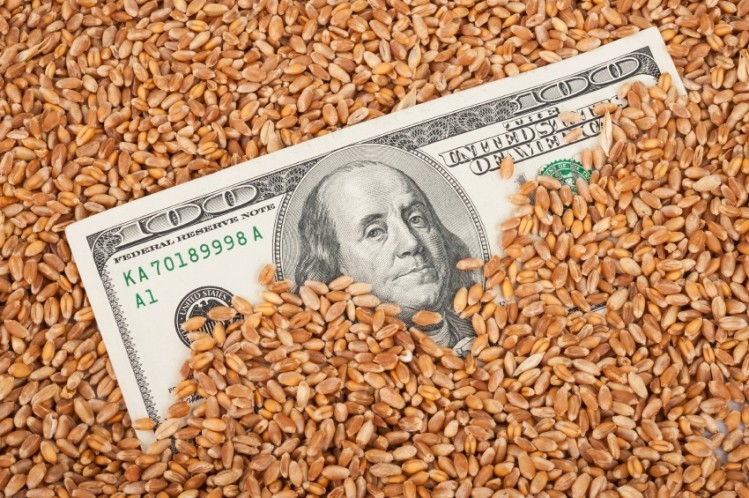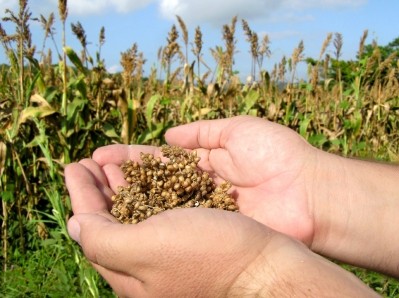US ag export expectations drop as feed exports increase

The department released an updated report detailing the Outlook for US Agricultural Trade last week, and noted that overall exports were expected to be below estimates set in February.
“The report aims to accurately forecast short-term US trade flows, and explain the important factors underlying those expected changes,” Bryce Cooke, USDA economist, told FeedNavigator.
The overall exports for fiscal year (FY) 2016 are anticipated to be about $124.5bn, a drop of $500m from the prediction set in February and $15.2bn less than the exports from FY2015, said the agency.
However, exports in grain and feed have improved by $500m since the previous forecast, it said.
Agricultural import expectations have dropped $3.7bn since February, but remain at a record $114.8bn, said the USDA. “The US agricultural trade surplus is forecast at $9.7bn, down from $25.7bn in FY2015,” it added.
World per-capita GDP and income in emerging markets, including Brazil, Russia, India, Indonesia and China, are expected to grow, the agency reported. Global trade amounts also are set to improve.
“A challenging external environment, including slower world trade and a strong US dollar, was reflected in weak first quarter US GDP growth,” said the USDA. “The economy is expected to strengthen in the second half of the year as continued improvements in labor markets and rising wages support consumer spending.”
Overall expected imports have been increased by $800m from FY2015 to a total of $114.8bn, said the USDA, but, are down from the previous forecast.
Feed and grain details
Increases in the expected export market for feed and grains have been based on the larger amount of wheat and corn and improved unit values for corn and sorghum, said the USDA.
“Coarse grain exports are forecast at $9.4bn, with corn up $400m to $7.8bn,” the agency said. “The competitiveness of US corn has improved as exports from Brazil have slowed seasonally.”
Adverse weather in Brazil and Argentina also has improved prices, it said. However, prices for wheat have dropped from large global supply.
Wheat exports have been increased by $100m to $5.1bn based on larger volumes offsetting decrease in value, said the USDA.
Oilseeds and related product exports also have seen an improved forecast rising $700m from the past report, said the department. The total trade prediction is $26.1bn, stemming from improved soybean and soybean meal export amounts and a higher soybean unit value.
“Soybean meal export value is raised $100m to $3.8bn, offsetting declines in soybean oil and other product export values,” said the USDA.
Chinese purchases of Brazilian soybeans have improved US sales to other countries, the agency said. However, meal exports still face competition from the devalued currency in Argentina.
Exports to Southeast Asia have dropped by about $500m based predominantly on slow sales of soybean and soybean meal, said the agency.
Feeds and fodders are expected to be at $6.9bn up from $8bn in 2015, said the USDA.
Overall imports of oilseeds and products have been reduced by $200m from the previous levels, said the agency. Predictions for grain and feed imports are set at $11bn up from the FY2015.
Imports from Canada have decreased by about $1.2bn from the previous projections, the agency said.
The downturn stems in part from a reduction in the US purchase of rape seed and meal, said Cooke.
Livestock details
Exports of livestock, poultry and dairy products have been dropped by $300m for a FY2016 prediction of $25.4bn, the USDA reported. Reductions in dairy, poultry products and beef exports were not balanced by increases in exports for other livestock products.
Dairy product export expectations had fallen by $200m and beef also dropped by $200m, said the agency. Pork improved by $100m from higher unit values and quantities.
“Broiler meat, turkey meat, and egg and egg product exports have experienced a slow recovery following the 2015 highly pathogenic avian influenza (HPAI) outbreak,” said the USDA.
Sales to Hong Kong have been reduced based partly on slower than expected exports of beef and poultry, said the agency.
Overall expected imports have been reduced by $1.4bn to a total of $63.6bn, said the USDA. But, remain higher than imports from FY2015.
Import expectations have been increased by $800m since the previous report based on volumes and unit values in beef and pork, said the agency. Dairy amounts and live animal imports are also improved, although below last year’s numbers.
However, imports from neighboring Canada also are lagging in this area, said the USDA.
“When comparing this fiscal year to fiscal year 2015 (FY2015) thus far, the value of US agricultural imports from Canada are down 6%, and the most notable change is livestock and meats which is down 24% in value terms from last fiscal year thus far,” said Cooke. Live animal imports, including of cattle are also down, he said.












